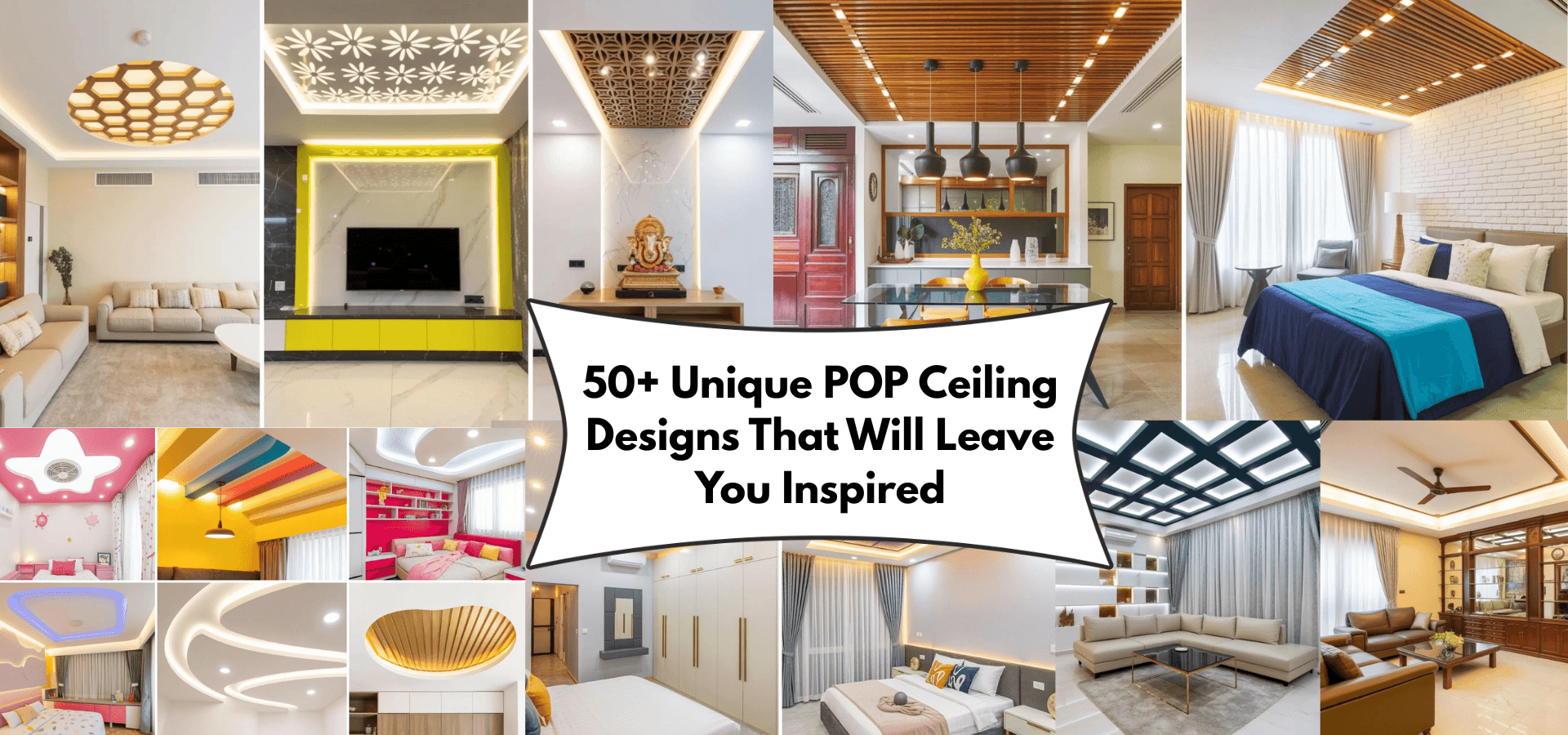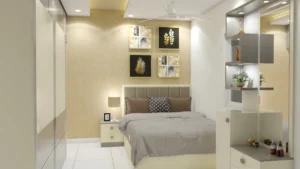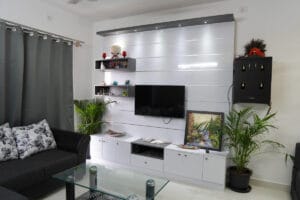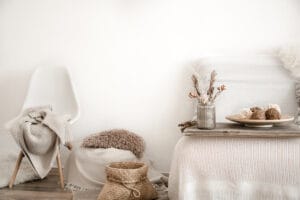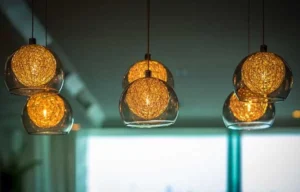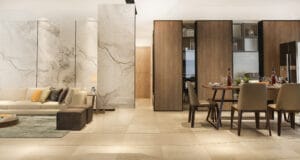Have you ever looked up at the ceiling and thought, “This space has so much potential”? You’re not alone! Ceilings often go unnoticed, but with Plaster of Paris (POP) ceiling designs, you can turn these overlooked surfaces into stunning architectural statements.
In this comprehensive guide by Wudbell, we’ll walk you through everything you need to know about POP ceiling designs—what they are, how they work, and how to creatively implement them in every room of your home.
What is a POP Ceiling Design?
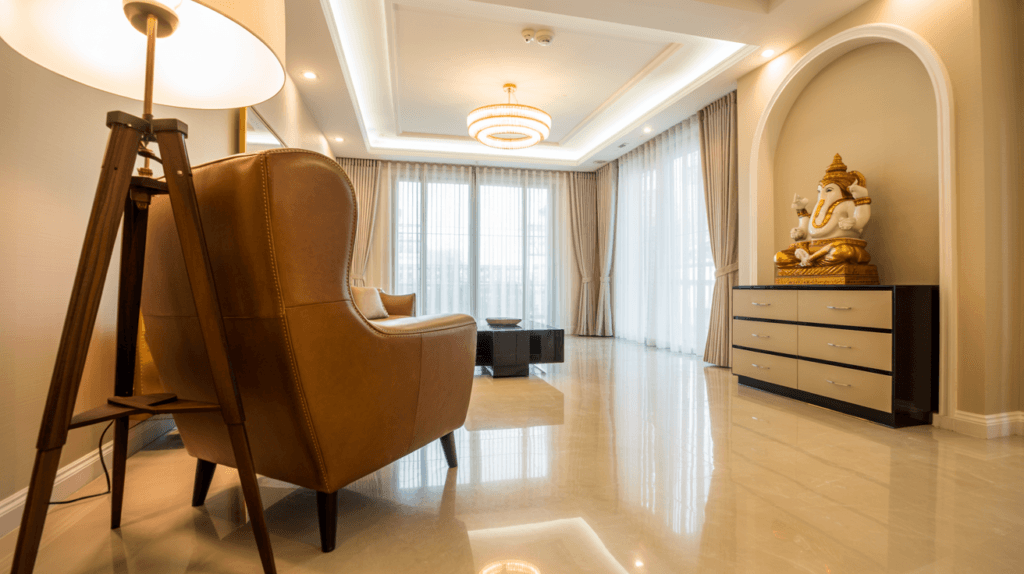
Plaster of Paris (POP) is a quick-setting white powder made from semi-dehydrated gypsum. When mixed with water, it hardens into a durable surface that can be molded into intricate shapes.
Room-by-Room POP Ceiling Design Ideas
Bedroom POP Designs
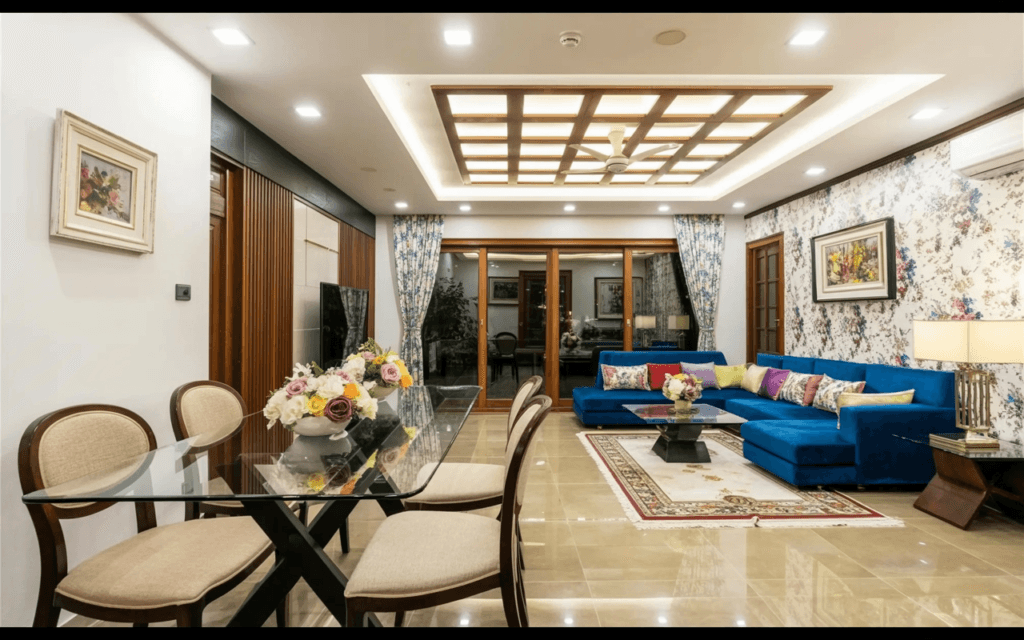
- Simple Borders: Clean lines for a minimalist vibe
- Recessed Lighting: Warm, soft lighting for a cozy ambience
- Custom Shapes: Floral patterns, curves, or even celestial motifs
Scenario: Imagine lying in bed and gazing up at a flower-shaped POP ceiling with soft mood lighting—it’s like sleeping in a luxury suite!
Kitchen POP Designs
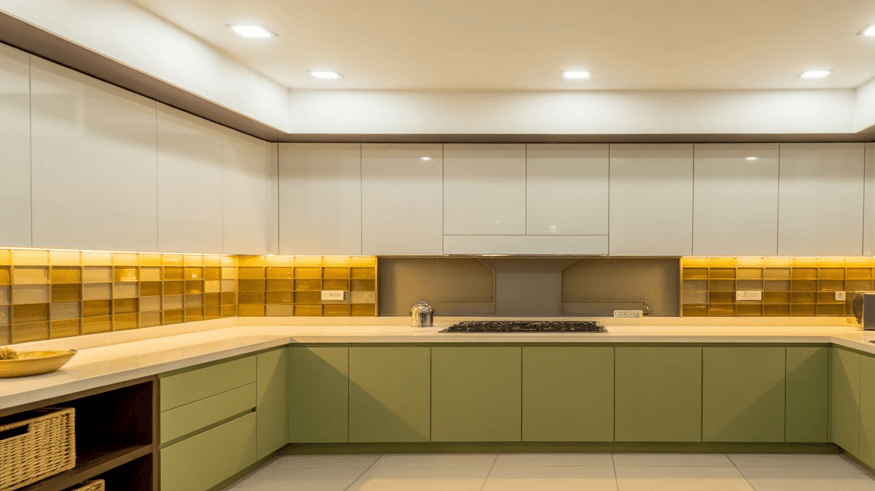
- Simple Flat Panels: For functionality and even light distribution
- Recessed Cove Lighting: Ideal for enhancing visibility while cooking
Pro Tip: Opt for low-maintenance designs here—smooth surfaces are easier to clean from grease or smoke.
Dining Room POP Designs
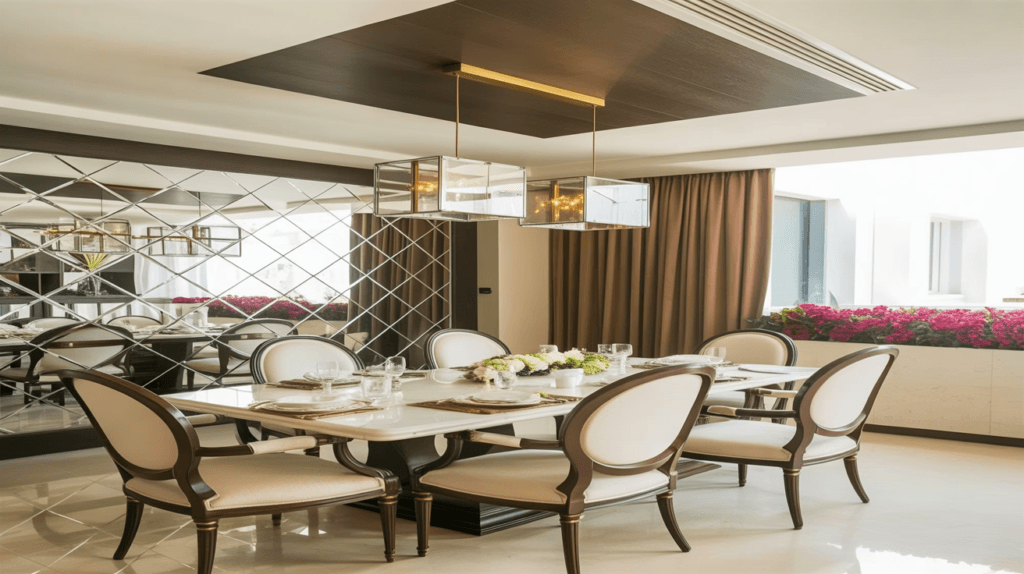
- Elegant Chandeliers in Recessed Domes
- Wood and POP Combos: Adds a regal touch
Key Insight: A well-designed dining ceiling becomes a conversation starter during gatherings.
Living Room/Hall POP Designs
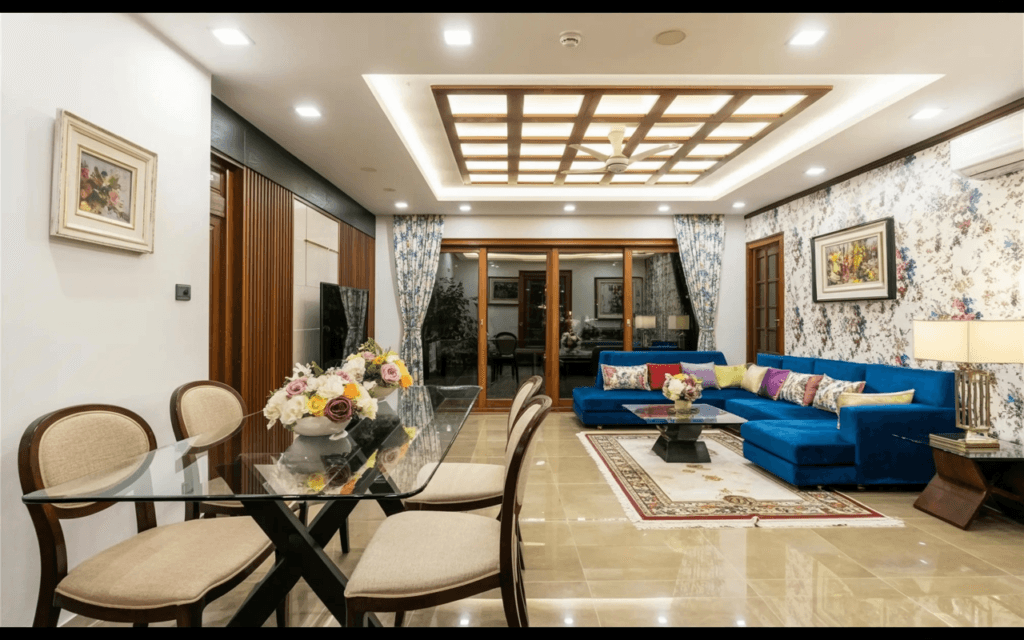
- Layered Ceilings: Add drama and dimension
- POP with Mirrors or Jaali Patterns: Reflect light and intrigue
Scenario: A living room with a honeycomb-patterned ceiling and pendant lights instantly ups your home’s wow factor.
Bathroom POP Designs
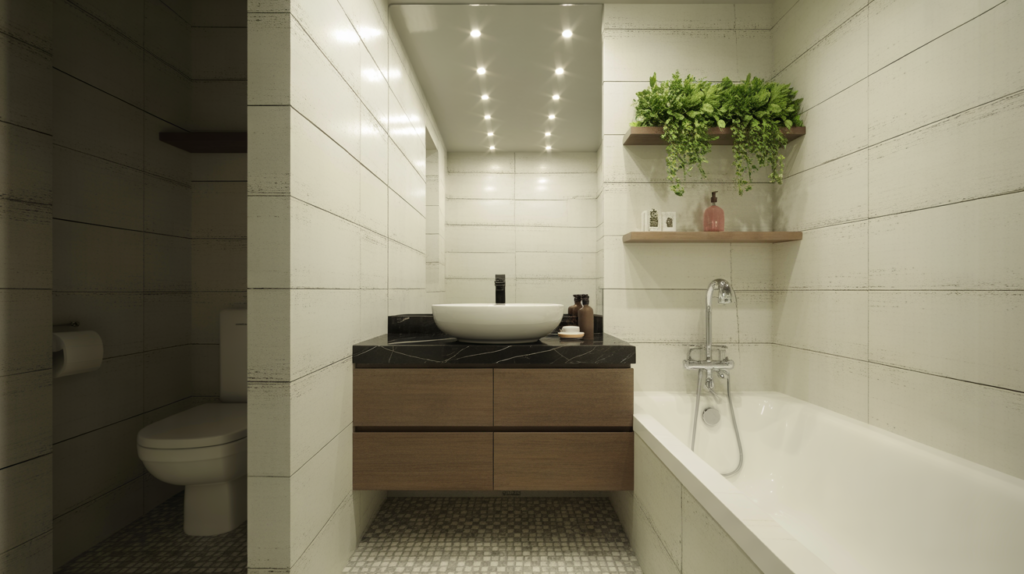
- Moisture-Resistant Finishes
- Hidden Wiring: Clean and safe installation
Pro Tip: Stick to light shades and basic shapes to keep the bathroom looking fresh and spacious.
Foyer POP Designs
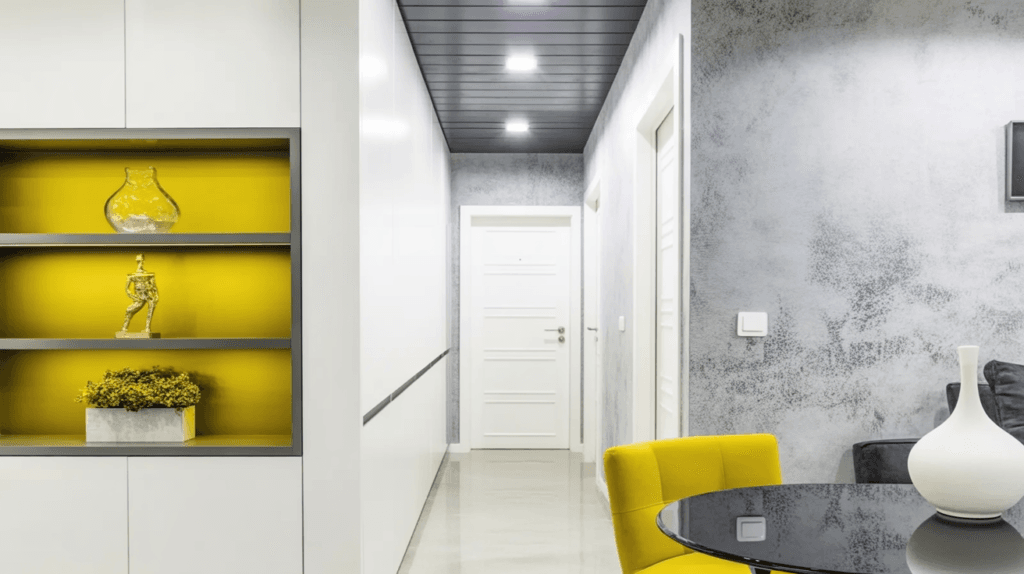
- Extended Wall-to-Ceiling Patterns
- Bold Entry Statements
Key Insight: The ceiling is the first thing guests will notice—make it count.
Study Room/Home Office POP Designs
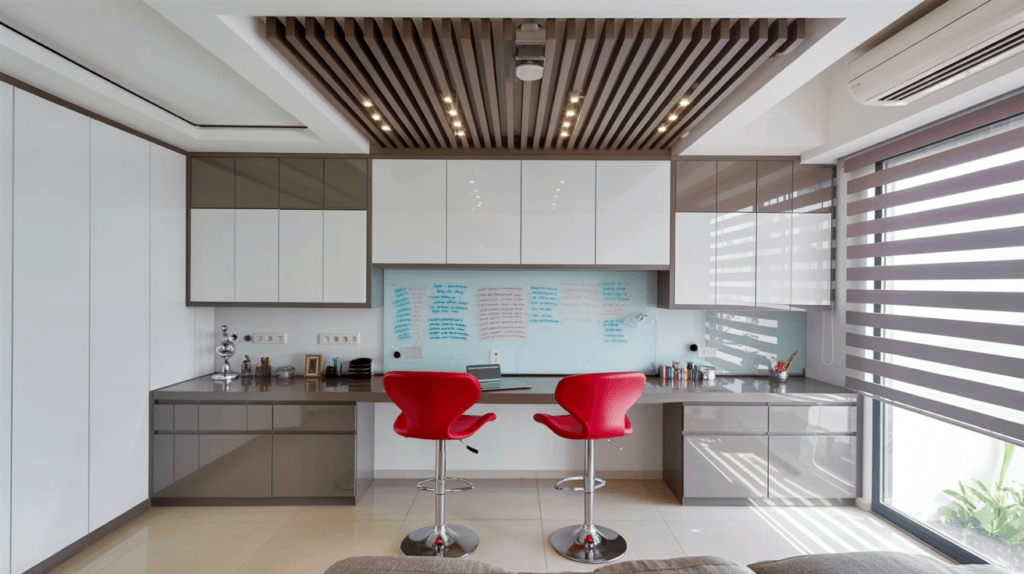
- Minimalist Panels: Keep distractions at bay
- Integrated Lighting: Boost productivity
Pro Tip: A sleek POP ceiling with LED strips enhances focus and gives your office a high-end feel.
Pooja Room POP Designs
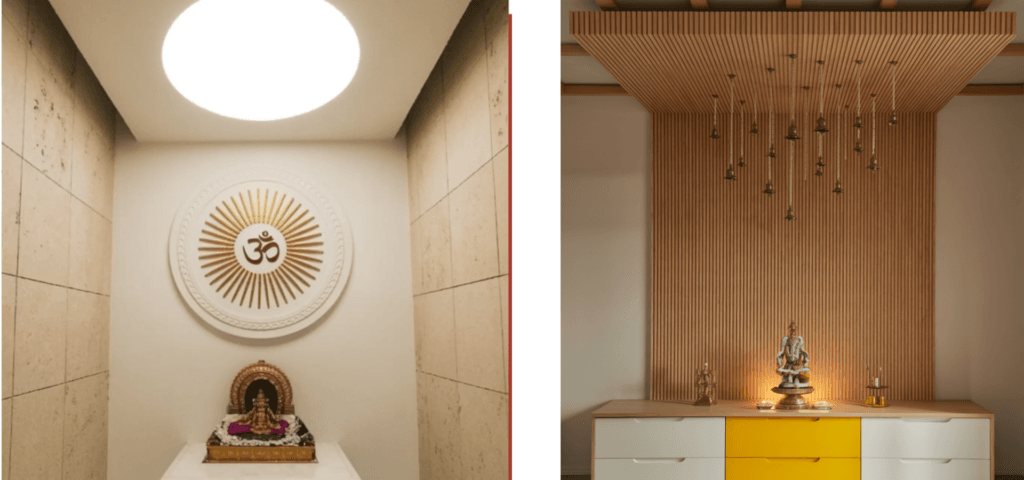
- Circular Domes with Soft Lighting
- Engraved Religious Symbols or Mantras
Scenario: A soft-glow ceiling enhances serenity and divinity in your spiritual space.
Kids’ Room POP Designs
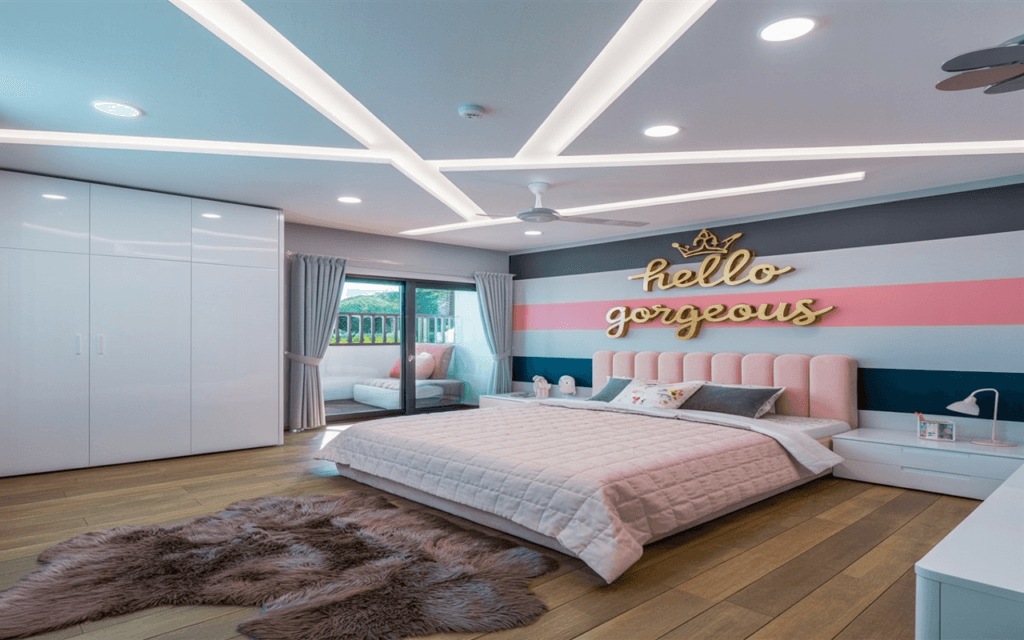
- Fun Shapes: Stars, clouds, or even football fields
- Bright Colors: Encourage creativity
Pro Tip: Use glow-in-the-dark paint for an added element of nighttime fun.
Balcony POP Designs
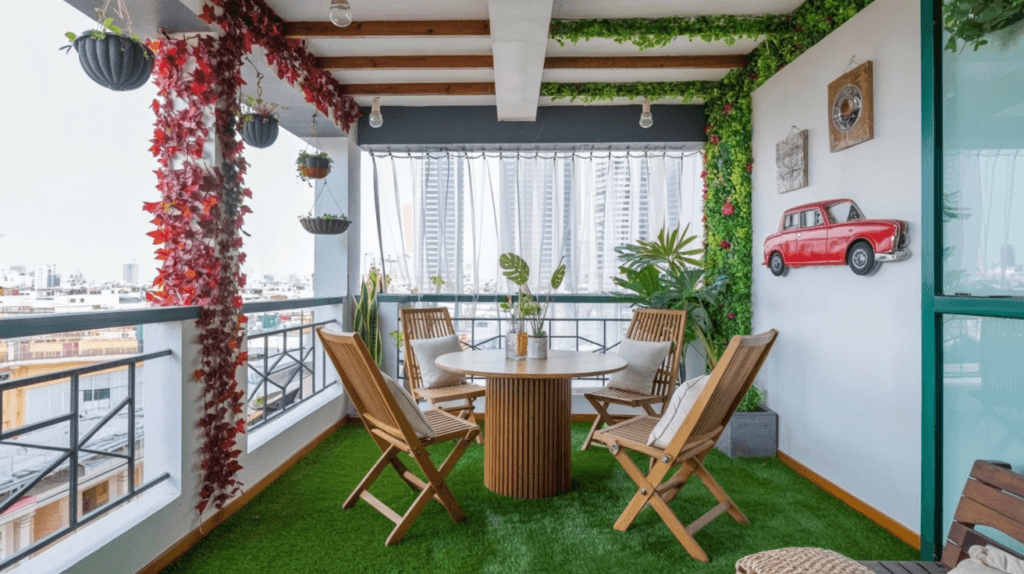
- Wooden Rafters: For earthy aesthetics
- Starry Night Themes: Paint the ceiling like the sky
Scenario: Enjoy your evenings under a star-inspired POP ceiling, even when the sky is overcast.
Specialty POP Ceiling Design Types
Wall-to-Ceiling / Extended POP Designs
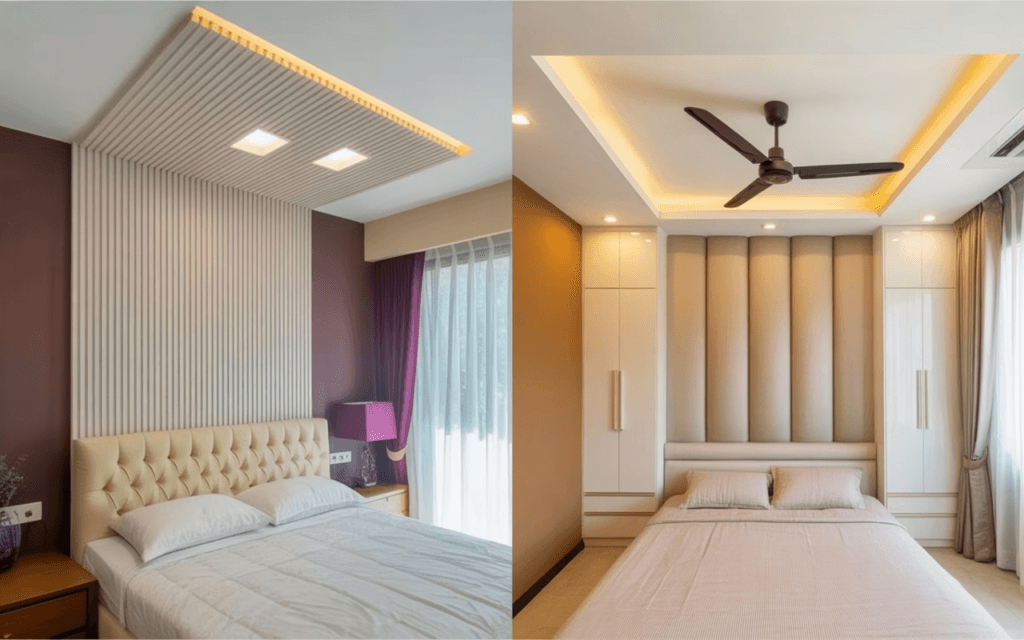
- Ideal for bedheads or media walls
- Unifies wall and ceiling into one visual element
Pro Tip: Match wall and ceiling hues for seamless aesthetics.
Circular POP Designs
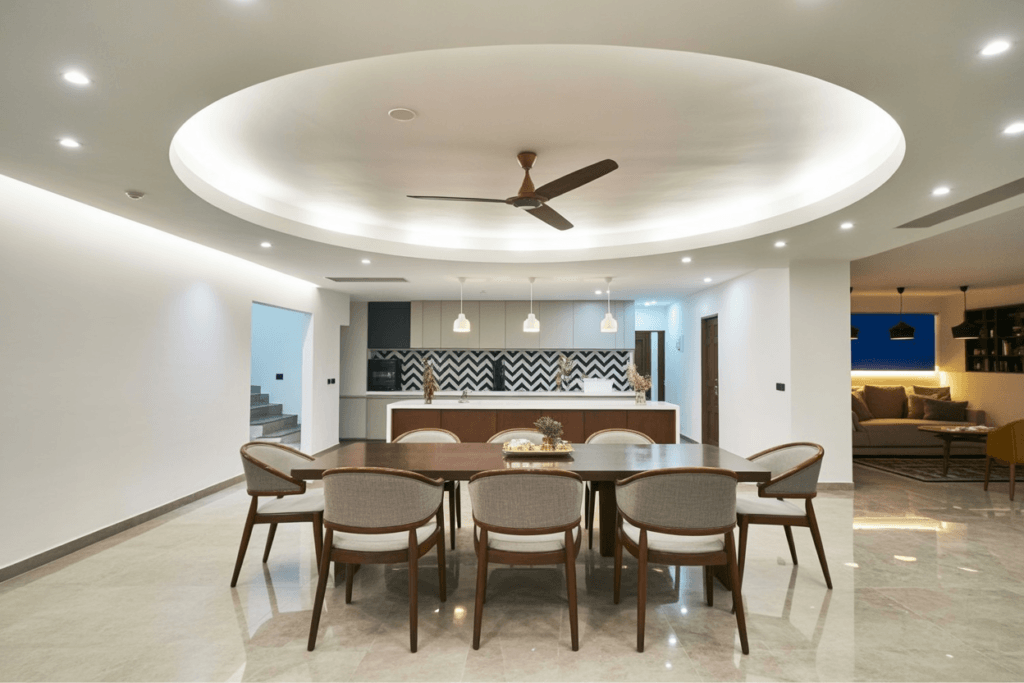
- Soft, round edges for a serene look
- Works great with ceiling fans or pendant lights
Rectangle POP Designs
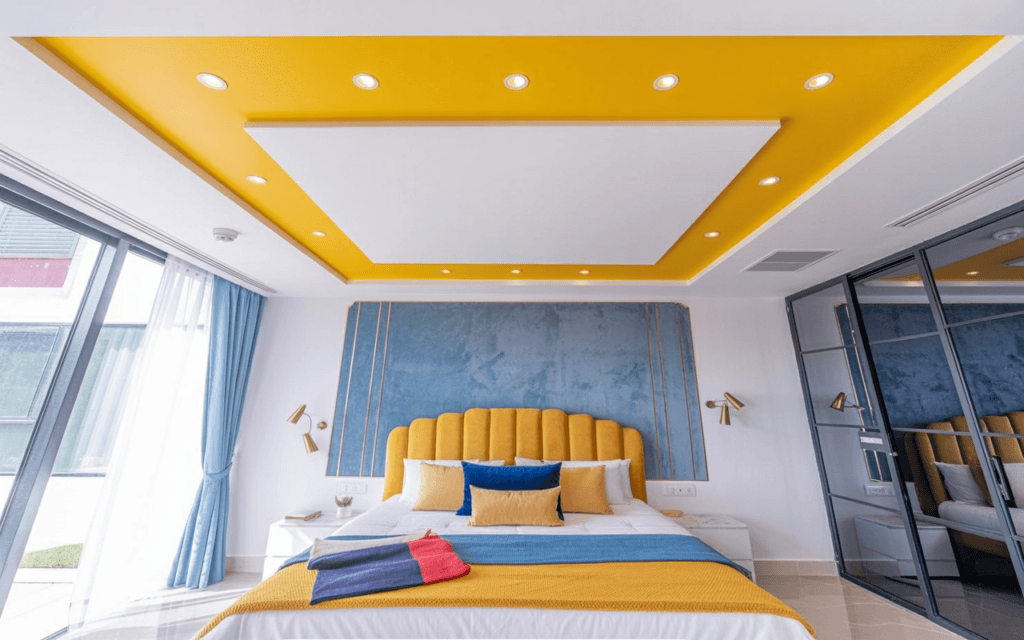
Looking to stick with a timeless design that still packs visual appeal? A rectangle POP ceiling design is a classic favorite, especially for bedrooms. Its elongated structure naturally draws the eye, enhancing the room’s length and symmetry.
How to Style It:
- Paint the ceiling in vibrant or complementary colours to your existing decor to build visual harmony.
- Add recessed lighting around the rectangle’s perimeter for a cozy and elegant glow.
Pro Tip: Use contrasting tones—like soft beige on walls and a bold terracotta or olive ceiling—to create a dramatic yet tasteful visual impact.
Square POP Designs
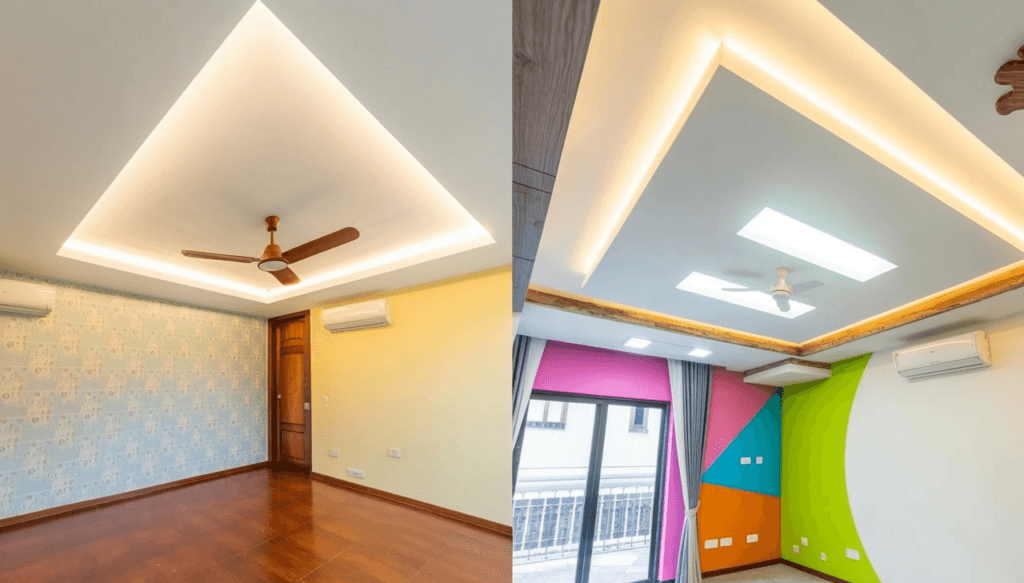
For rooms that are compact or require balance, square POP ceiling designs offer symmetrical elegance without overwhelming the space. This design works well in bedrooms, study rooms, or small living areas.
Why It Works:
- Enhances spatial proportion
- Blends easily with modern and minimalist aesthetics
- Can be paired with chandeliers or flush lights for added charm
Pro Tip: For added flair, use a dual-square layout—one inset within the other—with layered lighting to create depth and sophistication.
Layered POP Designs
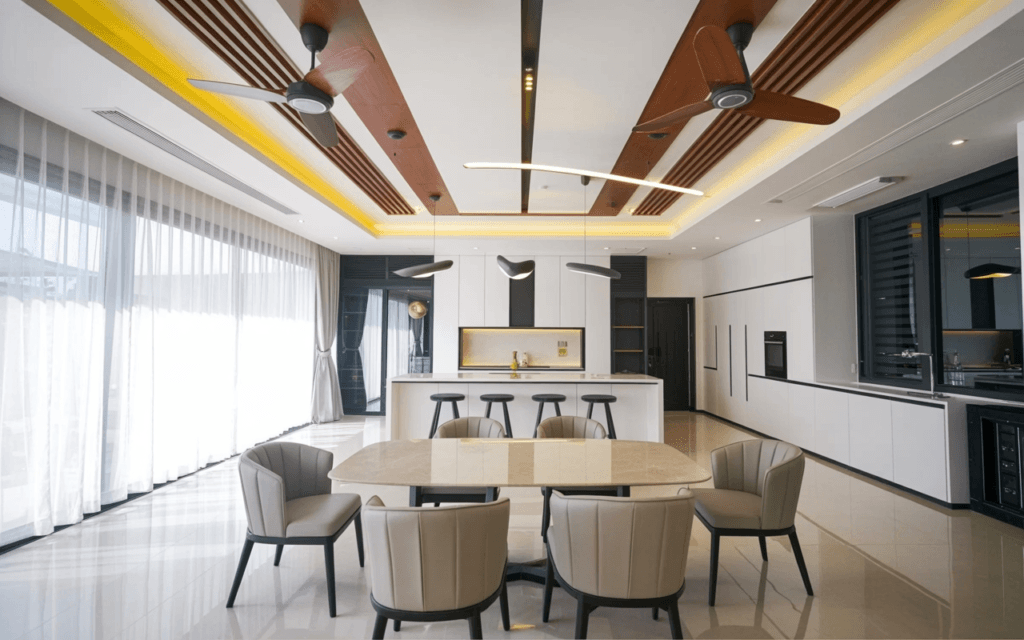
- Adds depth and visual intrigue
- Perfect for large rooms
Boxed or Coffered Ceilings
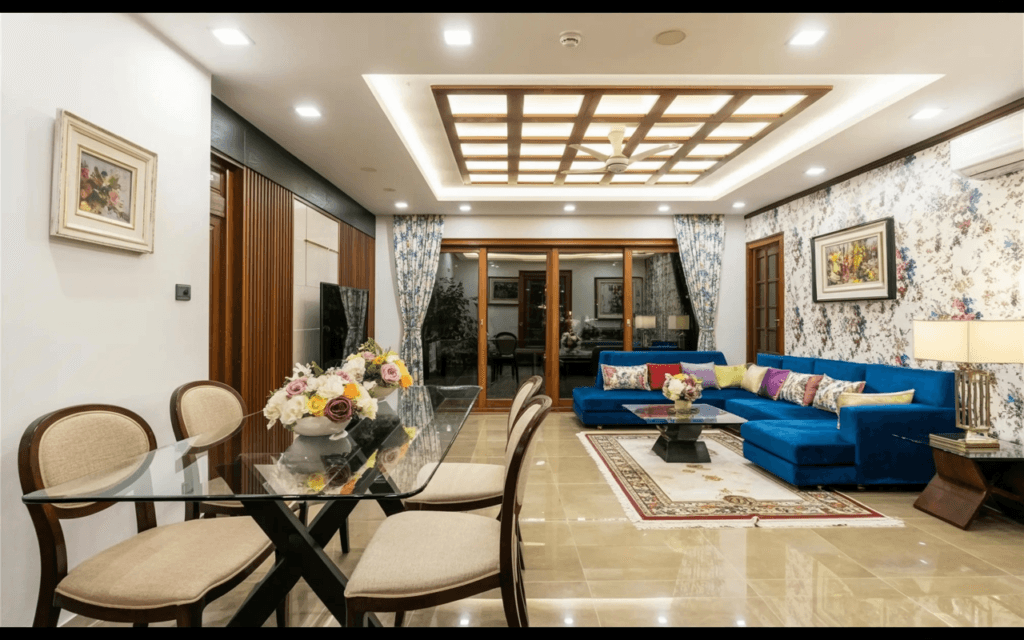
- Classic luxury appeal
- Can be modern or traditional based on finish
Key Insight: These create the illusion of higher ceilings and better proportions.
Simple and Elegant Designs
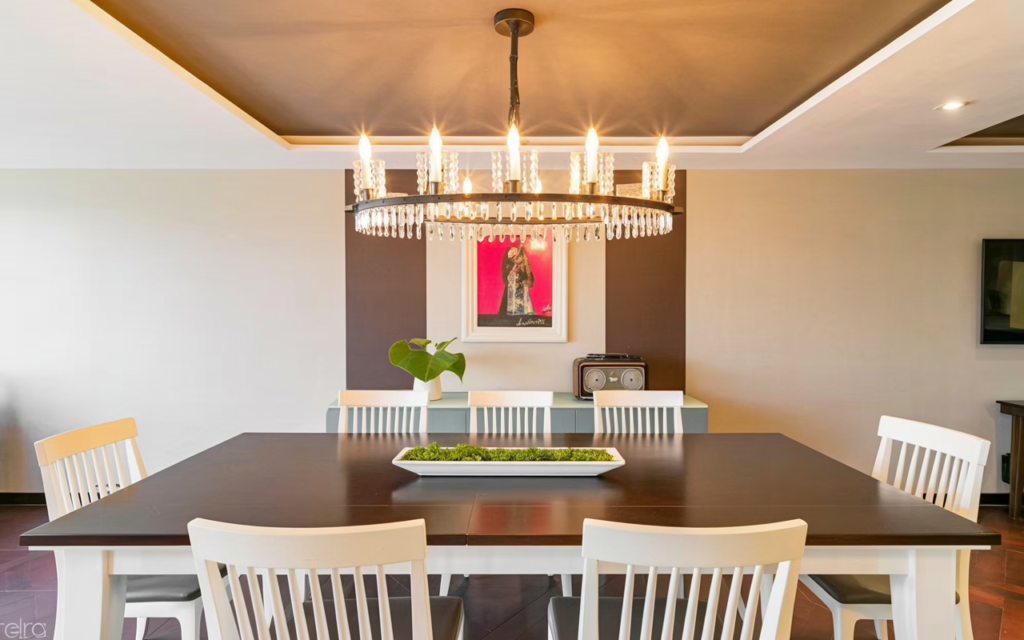
- Ideal for minimalist homes
- Pair with neutral colors for a timeless appeal
Unique POP Designs
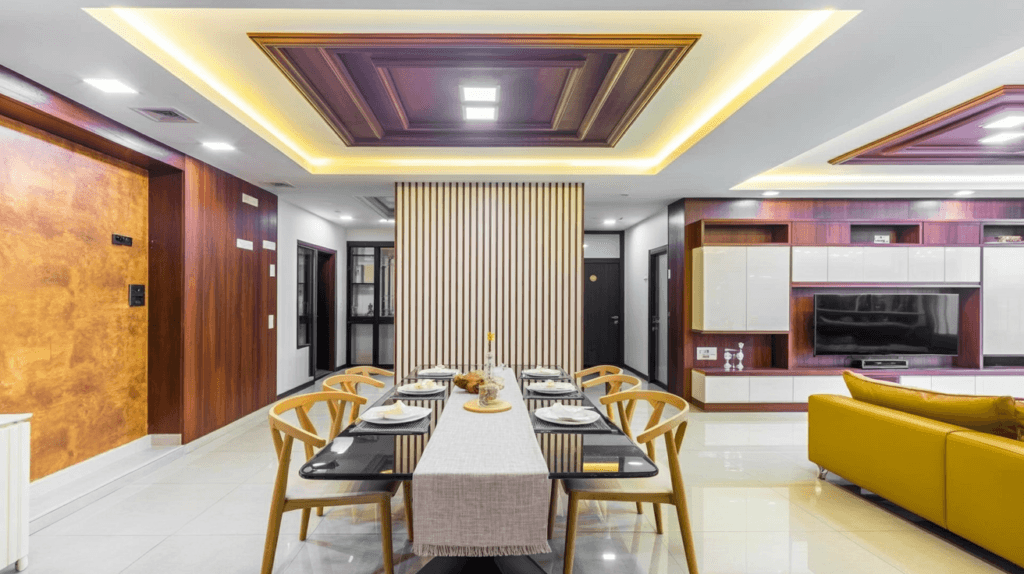
- Combine materials like wood or glass
- Use asymmetry, lighting, or texture for custom effects
Flower-Shaped POP Designs
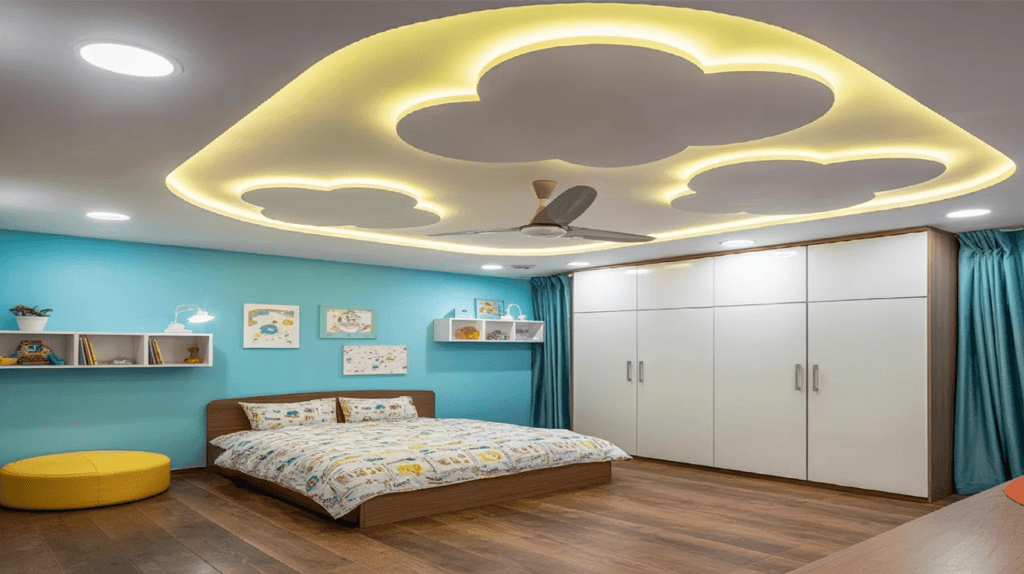
- Adds a whimsical, artistic touch
Colored and Themed Designs
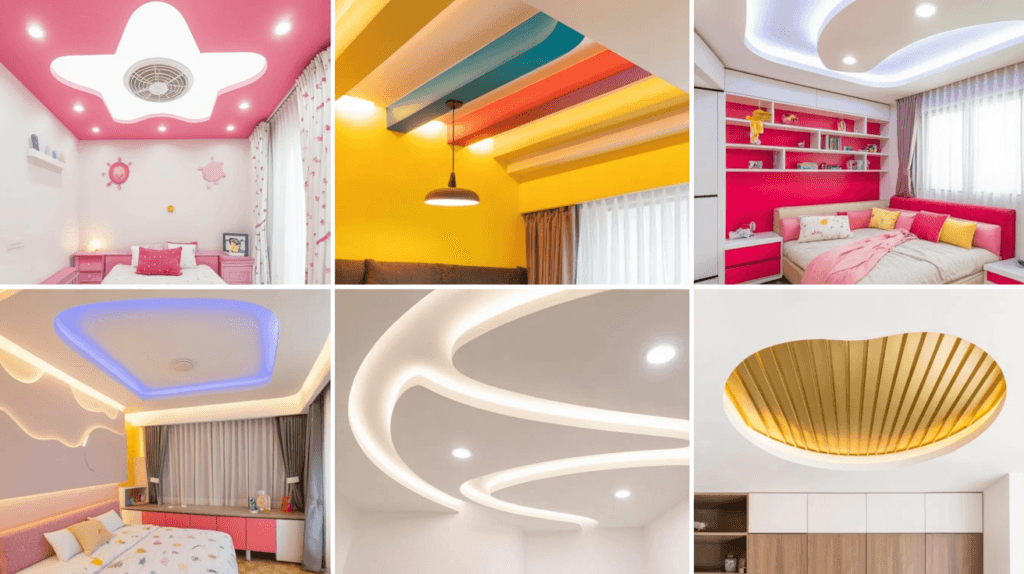
- Suitable for children’s rooms or creative spaces
3D POP Ceilings
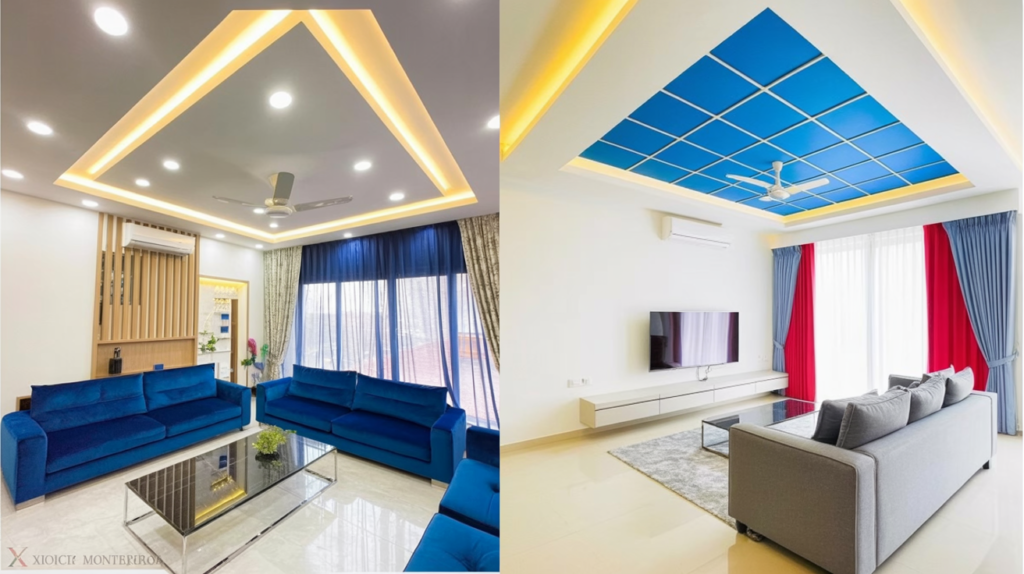
- Creates visual movement and layered shadows
Jaali and Honeycomb Patterns
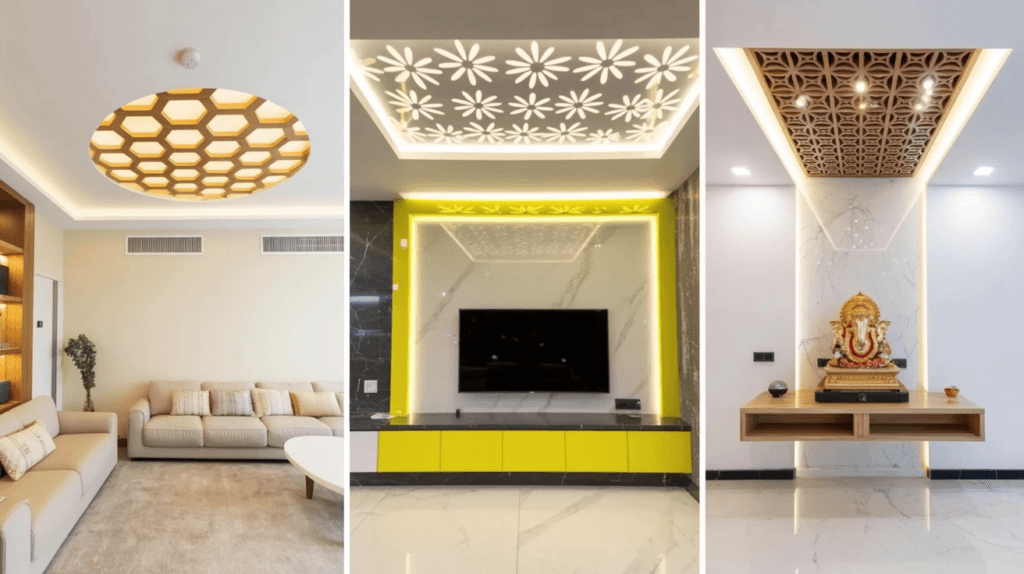
- Modern and artistic
POP with Wooden Rafters
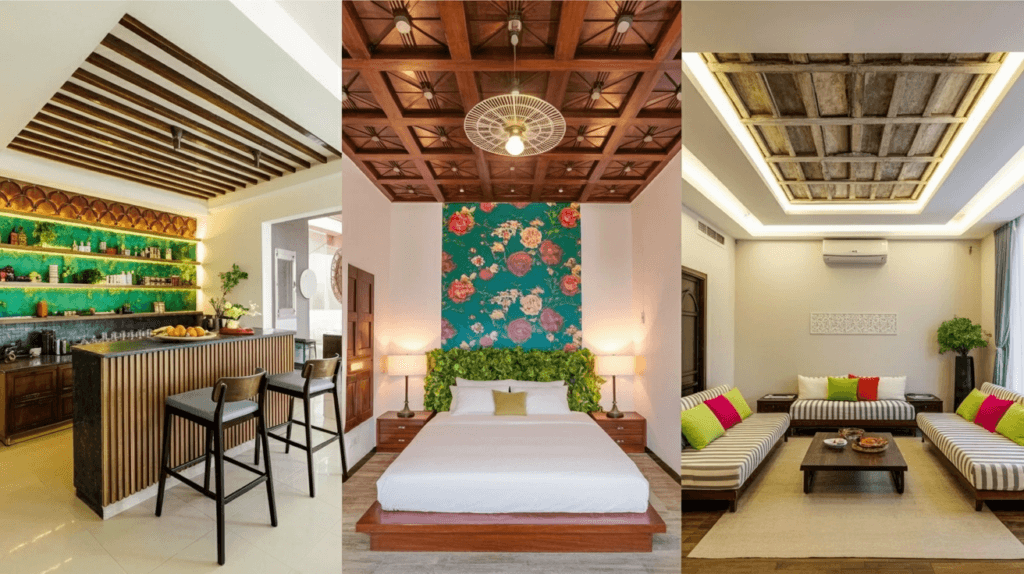
- Combines rustic and contemporary styles
Glass Integrated POP Designs
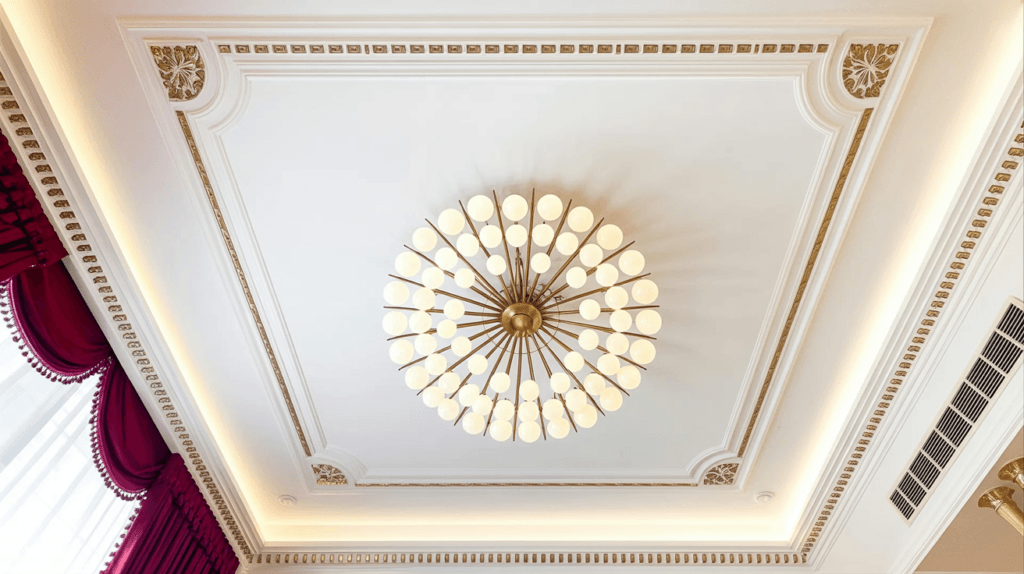
- Mirror ceilings for smaller rooms to amplify space
Inverted Cove POP Designs
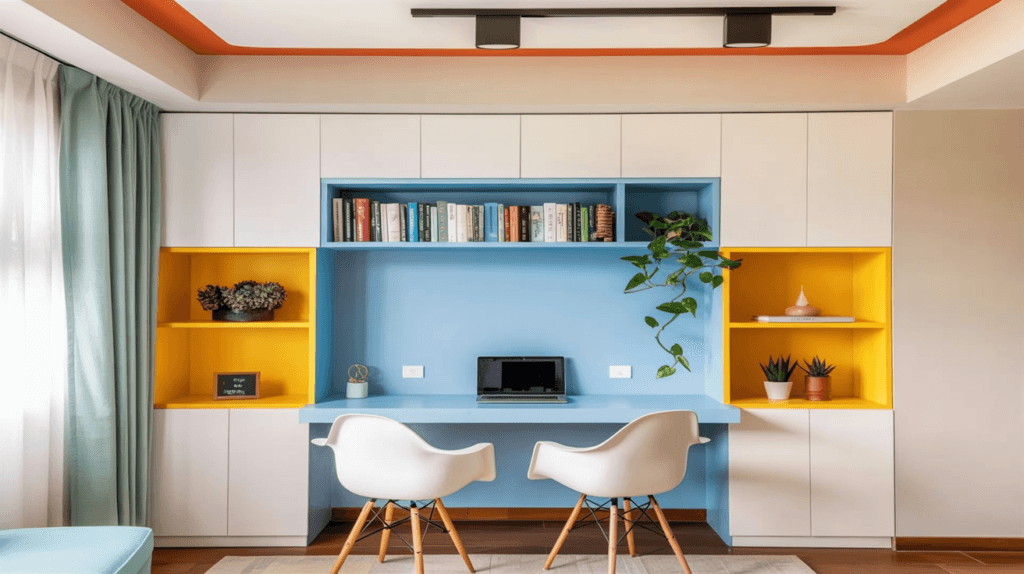
- Ideal for chandeliers and indirect lighting
Plus-Minus POP Designs
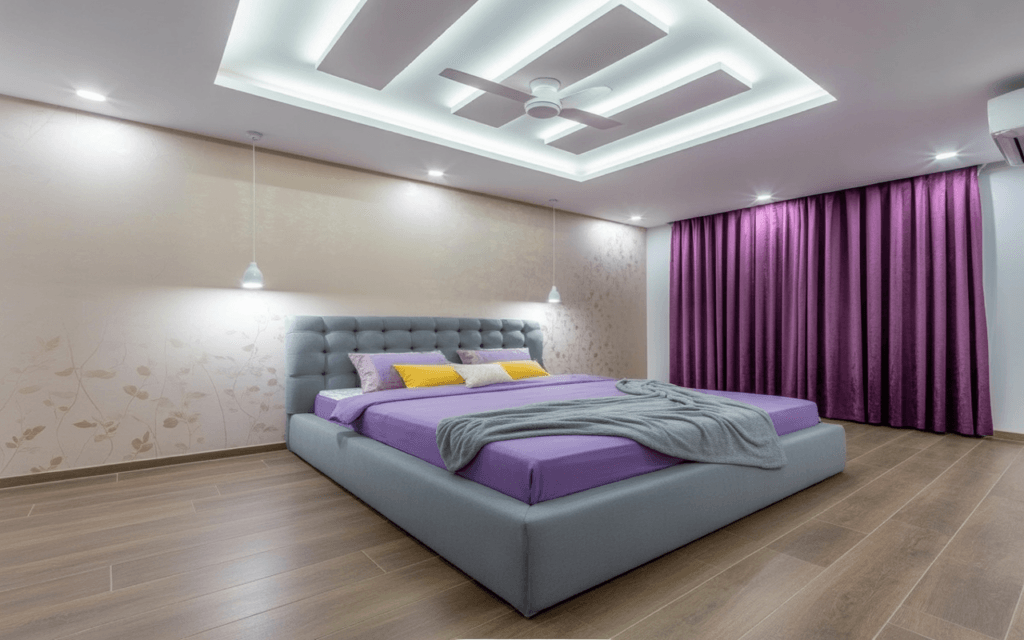
- Add or subtract material to create depth
Pro Tip: Use in larger rooms where you want to make a strong style statement.
Decorative Elements with POP
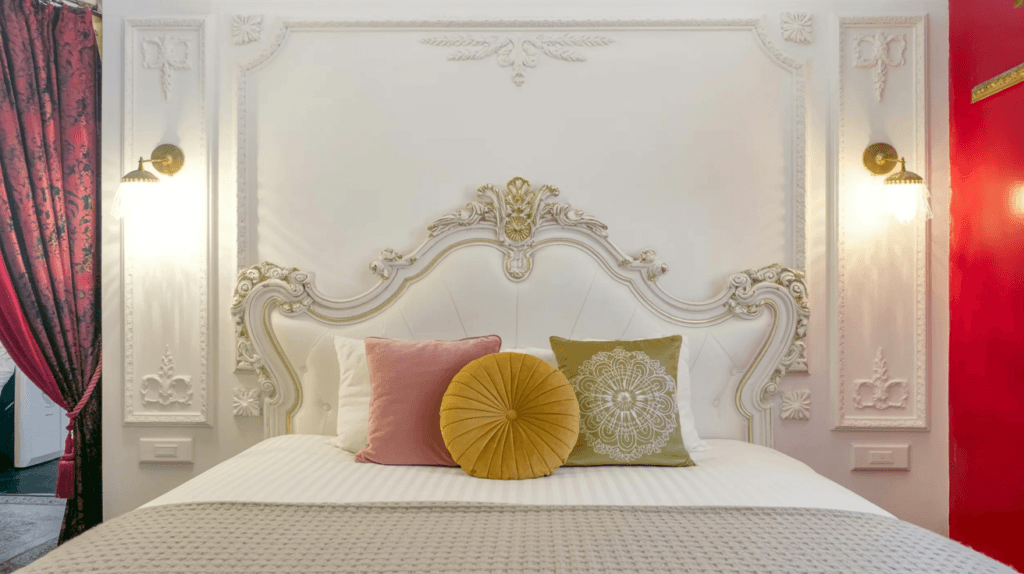
Exploring Alternatives to POP Ceiling Designs
While POP ceiling designs offer elegance and versatility, it’s wise to explore other options before finalizing your choice. Let’s take a closer look at two popular alternatives:
Alternatives to POP Ceiling Designs
While POP ceiling designs remain a favorite in modern interior aesthetics, it’s essential to understand what other options are out there—especially if you’re exploring different materials for functionality, cost, or maintenance. Let’s dive into two of the most commonly used alternatives to POP ceilings.
1. Wooden False Ceilings
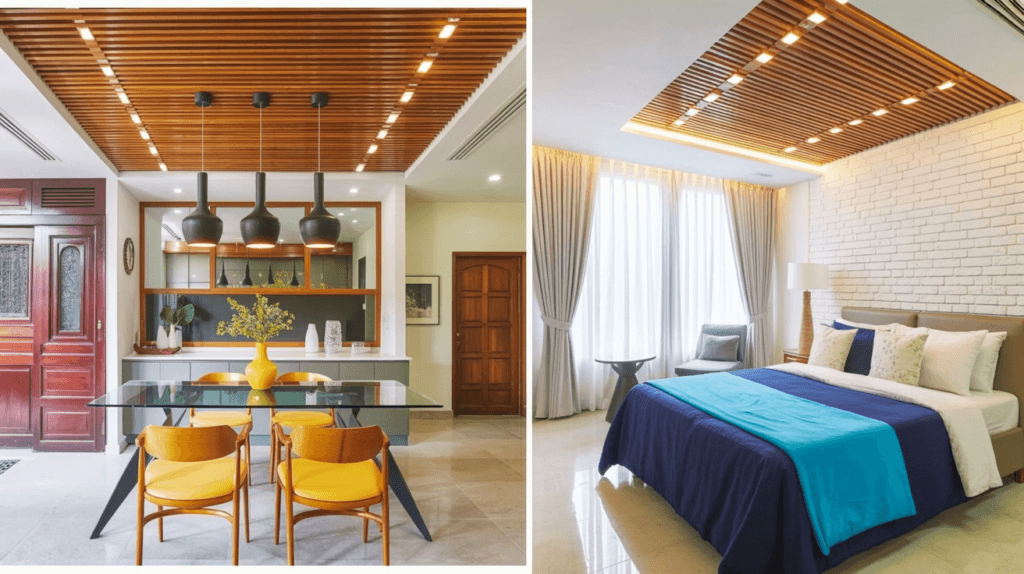
Wood brings natural warmth and character to a space, often giving off a sophisticated or rustic charm depending on how it’s styled. Wooden panels can be arranged in beams, planks, or custom patterns, making them ideal for living rooms or formal areas.
Benefits:
- Naturally elegant and timeless
- Customizable with stains, finishes, and paints
- Enhances acoustic insulation
Drawbacks:
- Higher cost compared to POP
- Requires regular maintenance to prevent warping, moisture damage, or termite infestation
Pro Tip: If opting for a wooden false ceiling, use seasoned and treated wood to enhance durability and reduce the risk of pests.
2. PVC Ceiling Designs
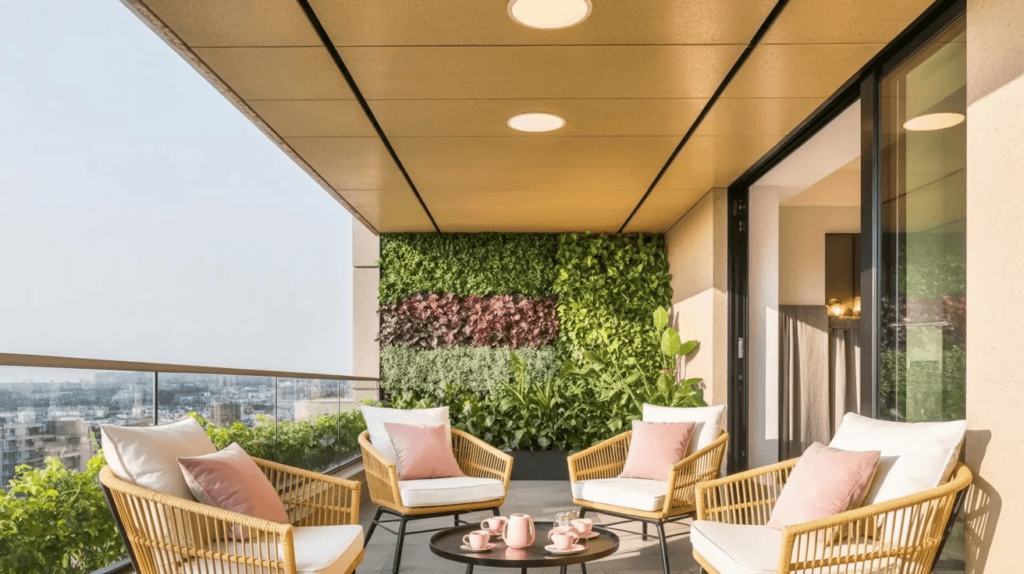
PVC, or Polyvinyl Chloride, is a practical and economical alternative to traditional ceiling materials. It’s lightweight, easy to install, and particularly useful in spaces like kitchens or bathrooms where water resistance is important.
Benefits:
- Waterproof, termite-resistant, and low maintenance
- Available in a wide variety of textures and colors
- Budget-friendly option for large-scale applications
Drawbacks:
- May lack the luxurious look of POP or wood
- Visible panel joints can disrupt the seamless aesthetic
Pro Tip: Use PVC ceiling panels in utility areas or rental properties where ease of upkeep outweighs design detail.
Advantages of POP Ceiling Designs
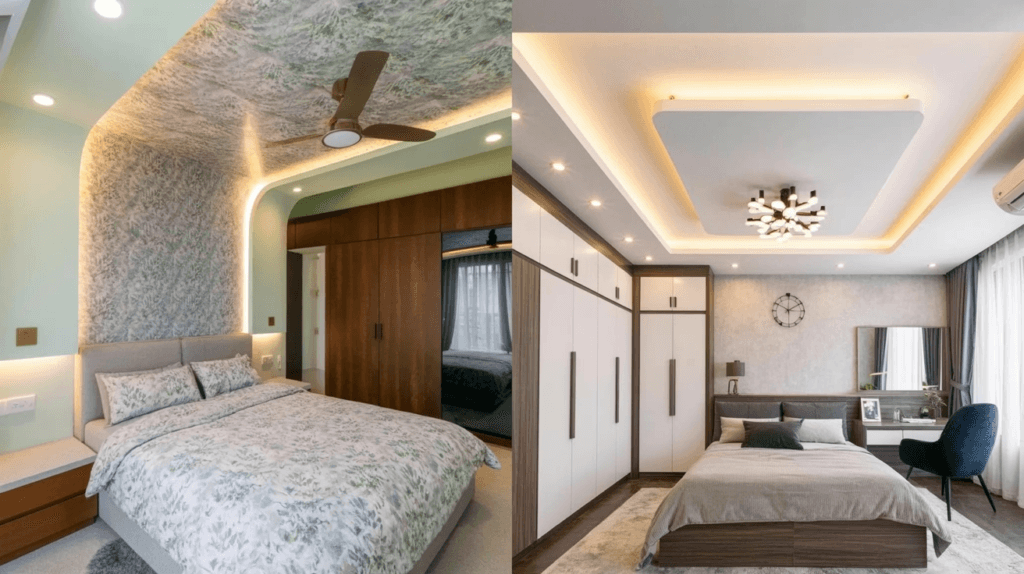
Despite the alternatives, many homeowners still prefer POP ceiling designs for their unmatched design flexibility and aesthetic appeal. Here’s why:
- Durable and lightweight for long-term use
- Fire-resistant and safe for residential interiors
- Excellent thermal insulation, making rooms more energy-efficient
- Smooth, crack-free finish due to minimal shrinkage during setting
- Highly moldable, allowing for curved shapes, 3D effects, and layered designs
- Great for concealing wiring and lighting systems
Wudbell Insight: POP ceilings are especially effective in enhancing ambient lighting and adding depth to any room layout.
Disadvantages of POP Ceiling Designs
Like any material, POP comes with its limitations:
- More expensive than gypsum board ceilings
- Needs professional installation by skilled craftsmen
- Can crack if not maintained properly over time
Pro Tip: Choose high-quality POP materials and trained experts for installation to ensure lasting results.
Choosing the Best POP Design for Your Home
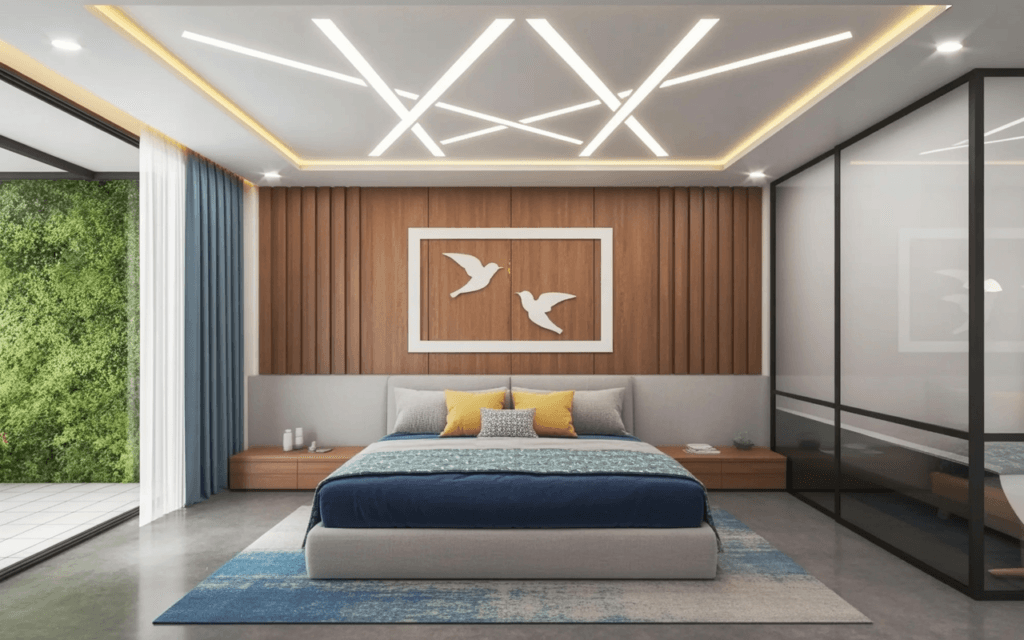
Your perfect POP design should align with these key factors:
- Budget: How much you’re willing to invest in material and labor
- Room Size & Height: Certain designs work better in taller or wider spaces
- Style Preferences: Minimalist, ornate, geometric, layered, etc.
- Lighting Needs: POP allows integrated lighting, which can greatly enhance room mood
Wudbell Insight: Blend the ceiling color with your walls for a seamless, elevated look—or contrast it to create bold visual interest.
Maintenance Tips for POP Ceilings
One of the greatest advantages of POP is its easy maintenance. Here’s how to keep it looking fresh:
- Dust regularly with a microfiber cloth or soft broom
- Clean stains with a diluted soap solution and a soft cloth
- Avoid moisture exposure to prevent deterioration in the long term
Quick Fix: Minor cracks or imperfections can be patched easily with POP filler and repainted.
In conclusion, while wooden and PVC ceilings each have their advantages, POP ceiling designs offer a versatile, aesthetic, and customizable solution for modern homes. When planned and maintained well, a POP ceiling isn’t just functional—it becomes a statement piece.
Wudbell is here to guide you in choosing the right ceiling design tailored to your lifestyle and space.

